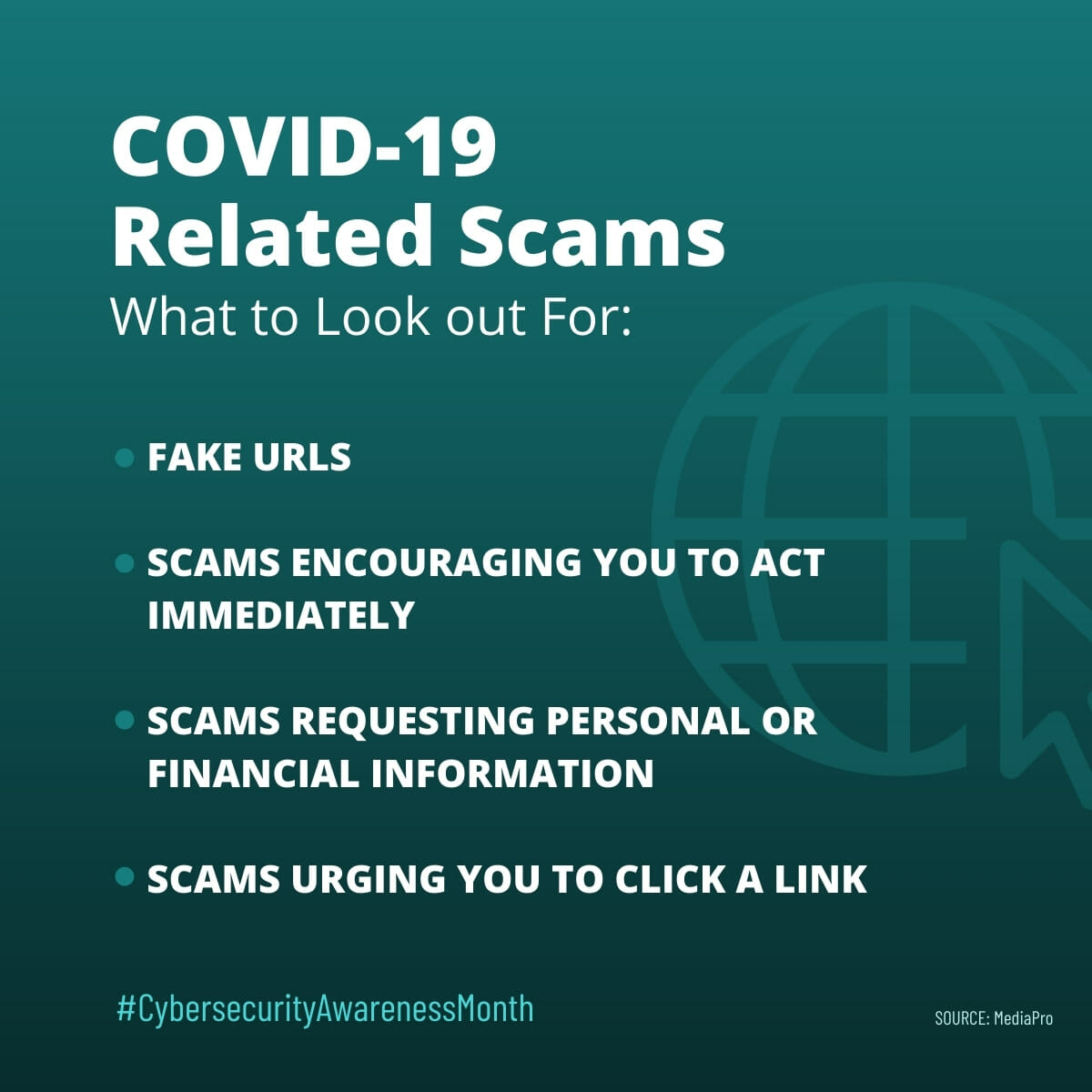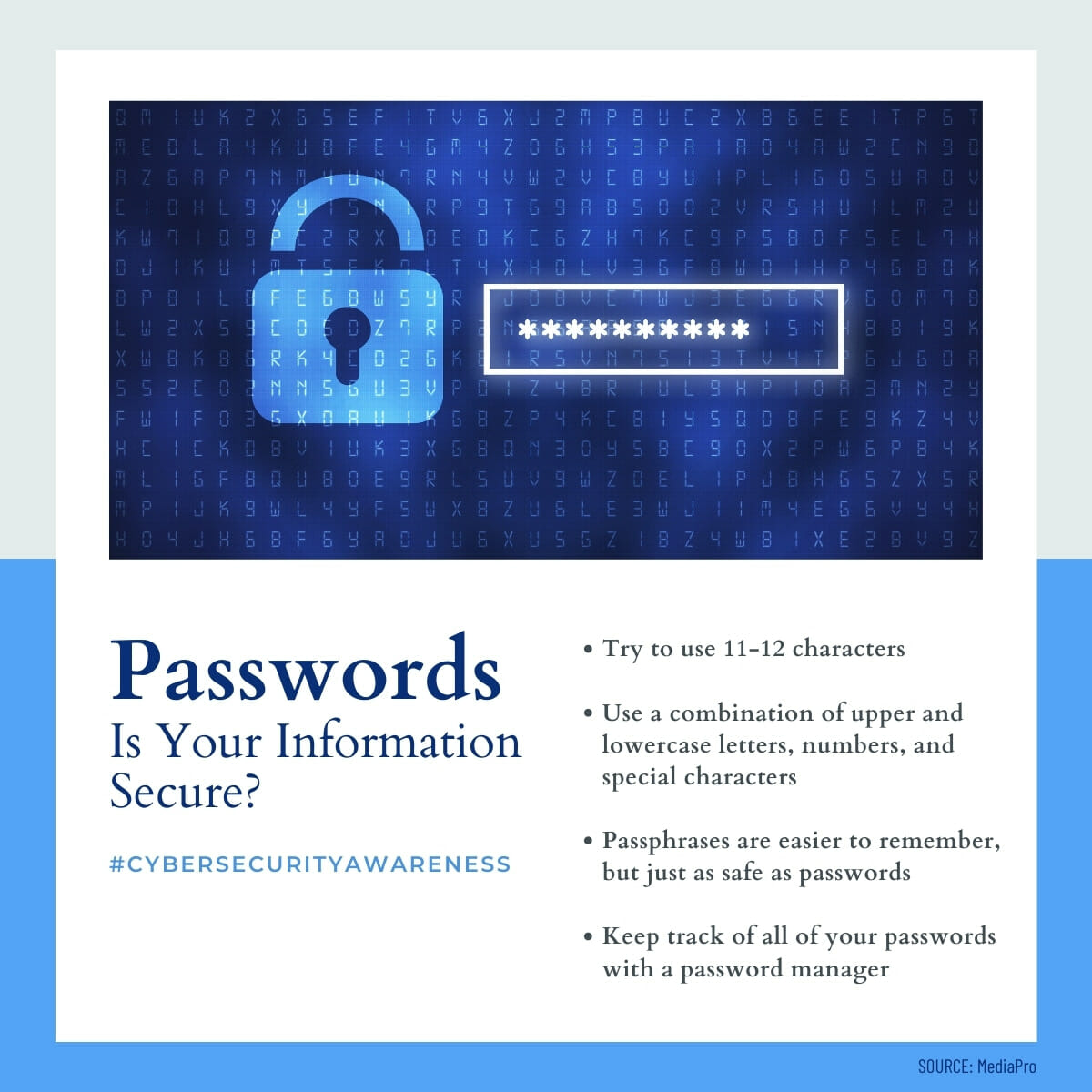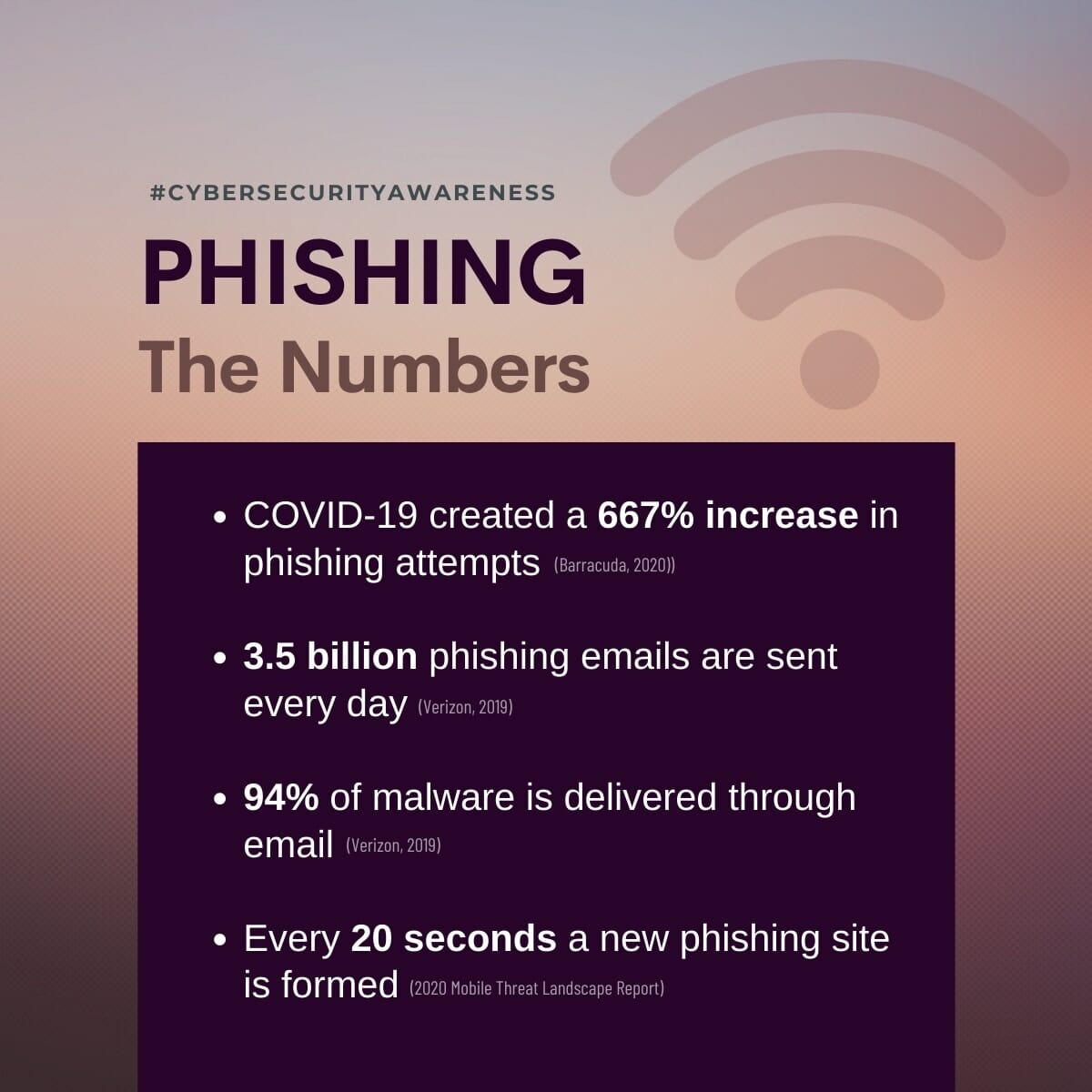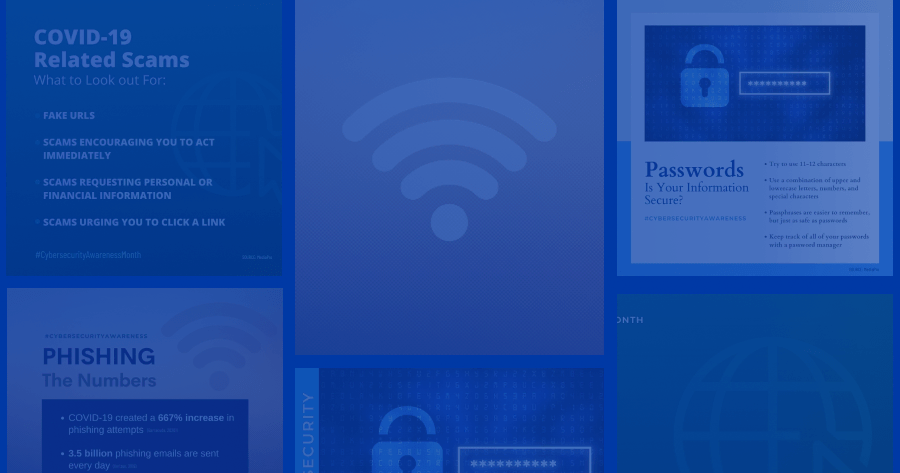October provides a number of different content opportunities for financial brands – one of the most important of which includes Cybersecurity Awareness Month. Cybersecurity is a crucial area of emphasis in financial marketing. It has only grown more important with the shift toward online banking during the COVID-19 pandemic. Generating valuable content not only helps to educate your followers, but also grows your brand. To help you get started, we’re provided this free Content Starter Kit.
Creating Content for Cybersecurity Awareness Month
To start generating content, the first step is to brainstorm different topics and how you will help your customers. Providing free educational resources to your customers helps them to avoid common mistakes and increase their loyalty to you. Cybersecurity is a constantly evolving topic and continually provides new avenues for content. Here’s a list of potential topics to create social media posts around:
- Scam and Fraud Identification
- Smishing Scams (Phishing through SMS)
- COVID-19 Related Scams
- Home Office Security
- Web Safety for Kids
- Password Security
Here are some sample posts and design templates to help your financial brand start to publish content around Cybersecurity Awareness Month.
Free Content
Post #1 – COVID-19 Related Scams

Since the beginning of the COVID-19 pandemic, the number of phishing attacks have risen sharply. There has been a 667% increase in the past eight months alone. To avoid falling for these scams, here’s what to look for.
- Fake URLs: Scammers often use fake URLs that resemble those used by credible organizations to trick unsuspecting victims. If a URL seems suspicious, avoid clicking it, or verify its credibility with this Google tool.
- Scams encouraging you to act quickly: Scammers look to incite fear, especially in high-stress times like a global pandemic. They will send emails pressuring you to act immediately or miss out. Government agencies and healthcare professionals do not do this, so be wary when you receive anything encouraging immediate action.
- Requests for personal information: Government agencies and healthcare professionals DO NOT reach out to you to request personal information over email. If you receive anything asking for personal information, it’s most likely a scam.
Now that you know what to look for, you can quickly identify and filter out scam messages as they come!
Post #2 – Password Security

Did you know that 123456 is the world’s weakest password, but 3% of the population still uses it? If that’s your password, it’s probably time to change it. Creating a strong password involves using a lengthy combination of upper and lowercase letters, numbers and special symbols. If you have a hard time remembering passwords, try creating a passphrase as it’s just as secure but much easier to remember. Is your password secure enough? Follow the link below to test it!
Post #3 – Phishing

Phishing is a term used to describe emails sent from scammers posing as reputable entities to elicit personal information. Phishing has become so prevalent that a new phishing site is created every 20 seconds. Keep your wits about you while browsing your emails. If it sounds too good to be true, it probably is.
Do you have questions about content or are interested to learn more about how Social Assurance can help with your financial brand’s cybersecurity messaging? Email us at content@socialassurance.com or click the button below to reach out. Don’t forget to access our other marketing resources, including how to keep your social content fresh and correct dimensions for social media image sizes.


